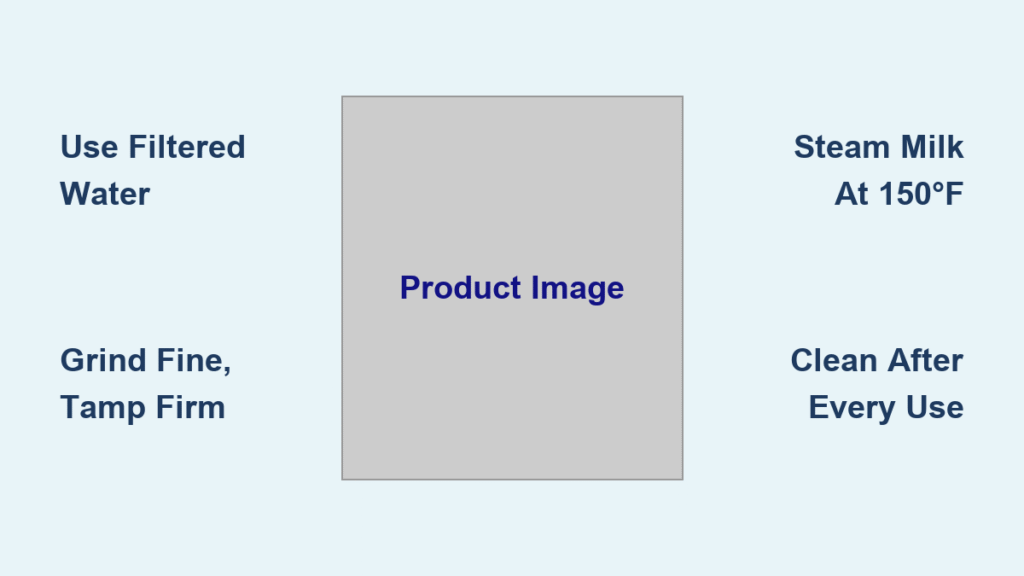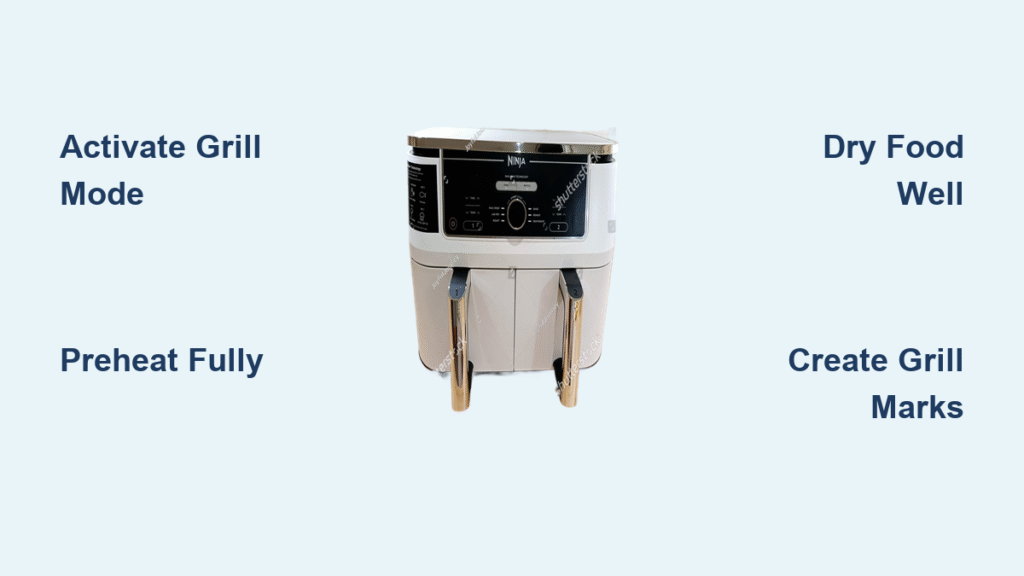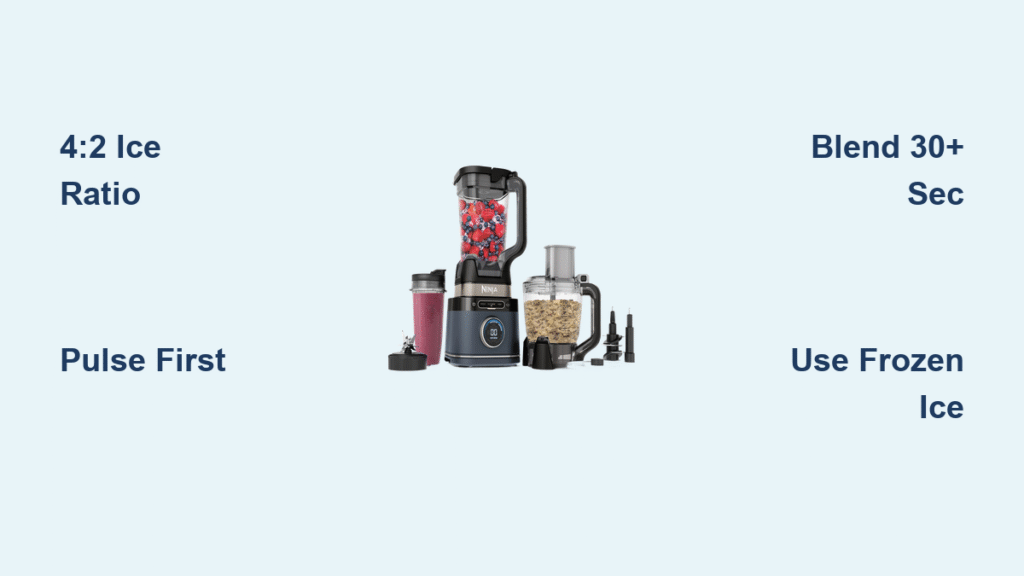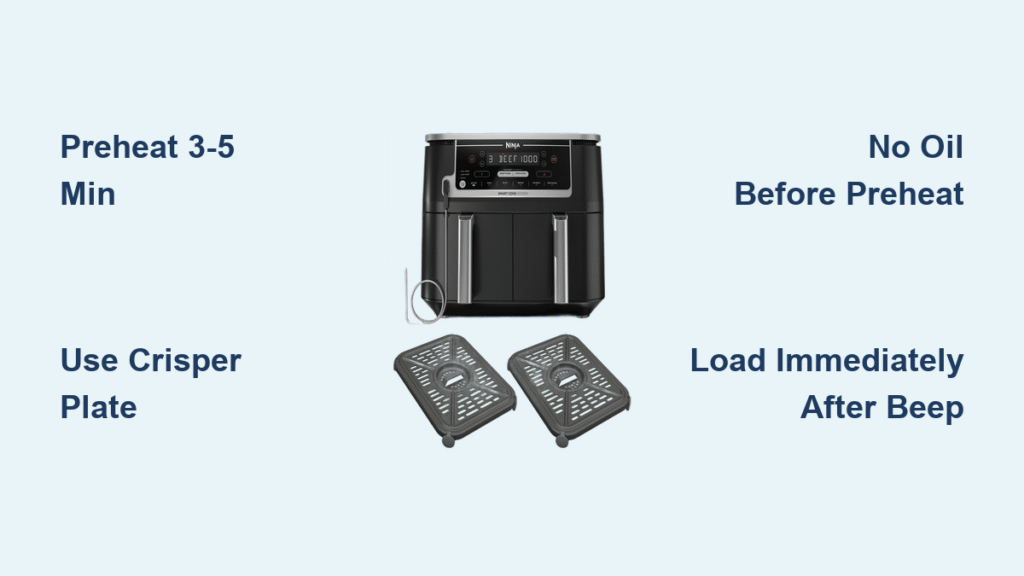That sleek Ninja espresso machine just arrived, and you’re ready to ditch coffee shop lines for café-quality espresso at home. But between the portafilter, steam wand, and blinking buttons, where do you actually start? You’re not alone—over 70% of new espresso owners waste their first week struggling with basic operation. This guide cuts through the confusion with exact steps to pull rich, crema-topped shots and steam silky milk within 30 minutes. Forget complicated manuals; you’ll master every feature using only your machine’s built-in tools and fresh coffee.
By the time you finish this guide, you’ll confidently navigate daily operation, fix common issues like watery shots or weak steam, and create barista-level lattes that impress guests. No prior experience needed—just follow these proven steps to transform your kitchen into a personal espresso bar.
Water Reservoir Setup and Power Activation
Fill the removable 60-ounce water reservoir with cold, filtered water up to the MAX line—never exceeding it to prevent leaks. Slide it firmly into the machine’s rear slot until you hear a distinct click. Plug directly into a 120V wall outlet (not a power strip) and press the power button. Within 15-20 seconds, the thermoblock heats to brewing temperature, signaled by steady blue lights.
Critical first step: Always use filtered water. Tap water minerals cause scale buildup that clogs internal tubes within weeks, triggering error messages. Your machine’s charcoal filter (replaced every 60 refills) extends component life significantly—don’t skip this.
Mandatory First Rinse Cycle
Position a large mug under the portafilter spouts, insert the empty double filter basket, and press the lungo button. Let hot water flow continuously for 15-20 seconds until the cup fills. Repeat twice. This flushes manufacturing oils from the thermoblock and group head. Skipping this causes bitter, chemical-tasting espresso in your first real brew.
Portafilter Loading for Optimal Extraction
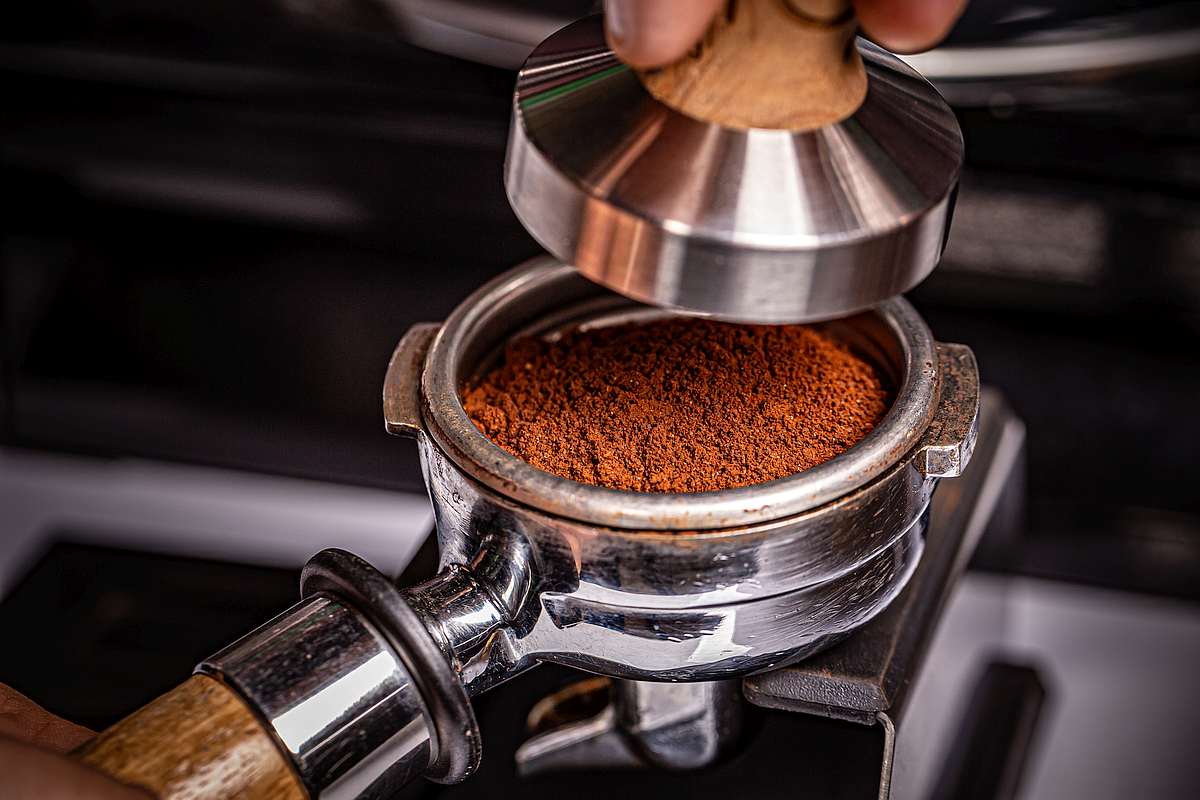
Correct Coffee Dose and Grind Size
Use 14-18 grams of freshly ground coffee for double shots (7-9g for singles). Your grind must resemble fine table salt—too coarse yields sour, weak shots; too fine causes bitter, slow drips. Grind beans immediately before brewing; pre-ground coffee loses 60% of its volatile aromatics within 30 minutes. A $20 kitchen scale ensures precision—eyeballing doses is the #1 cause of inconsistent shots.
Level Tamping to Prevent Channeling
Distribute grounds evenly in the basket, then place the portafilter on a flat surface. Press the tamper straight down with 30 pounds of force (like squeezing a stress ball firmly). The coffee bed must be perfectly level—any tilt creates “channeling” where water bypasses grounds, producing watery espresso. Wipe the portafilter rim with a dry cloth to eliminate gaps that cause leaks during brewing.
Pulling Your First Perfect Espresso Shot
Locking and Brewing Sequence
Insert the filled portafilter into the group head, twisting clockwise until snug (about 1/8 turn past contact). Place a pre-warmed cup under the spouts and press the double shot button. Extraction should begin within 5 seconds as a thick, honey-colored stream. Stop at exactly 2 ounces (60ml) for balanced flavor—over-extraction beyond 30 seconds turns shots bitter.
Pro indicator: Watch the crema. Golden-brown foam 1/8 to 1/4 inch thick means ideal extraction. Blonding (pale streaks) signals under-extraction—adjust by using a finer grind next time.
Troubleshooting Shot Flow Issues
If water drips instead of flowing steadily, your grind is too fine. If it gushes out in under 15 seconds, it’s too coarse. Never adjust dose and grind simultaneously—change only one variable per test shot. For weak crema, verify coffee freshness: beans roasted over 21 days ago lose CO2 needed for foam formation.
Creating Barista-Grade Microfoam
Steam Wand Positioning and Timing
Purge the wand for 3 seconds to eject condensation, then submerge the tip 1/4 inch below cold milk’s surface (1/3 full in pitcher). Turn the steam knob counterclockwise while positioning the wand at 3 o’clock. Listen for a gentle paper-tearing sound—this introduces air for 4-5 seconds until milk reaches 100°F.
Achieving Velvet-Textured Milk
Lower the pitcher to submerge the wand tip fully, creating a whirlpool vortex. Continue steaming until the pitcher becomes too hot to touch (150-160°F). Whole milk yields the thickest foam, but oat milk (barista blend) works best for dairy-free. Overheating past 160°F scalds milk, creating large bubbles that ruin latte art.
Customizing Shots and Temperature Control
Programming Personal Shot Volumes
Hold the double shot button for 3 seconds until lights blink. Press start when your cup reaches the ideal level (e.g., 1.5 oz for a stronger ristretto). The machine saves this setting automatically. Reset to defaults by holding any button for 10 seconds—critical after experimenting with doses.
Optimizing Extraction Temperature
The Ninja’s thermoblock maintains 195-205°F automatically—the sweet spot for dissolving coffee solids without scalding. Its pre-infusion phase wets grounds for 2-3 seconds before full pressure, reducing channeling. If shots taste sour, your water might be too cool; descale immediately if the machine takes longer than 20 seconds to heat.
Daily and Weekly Maintenance Protocol
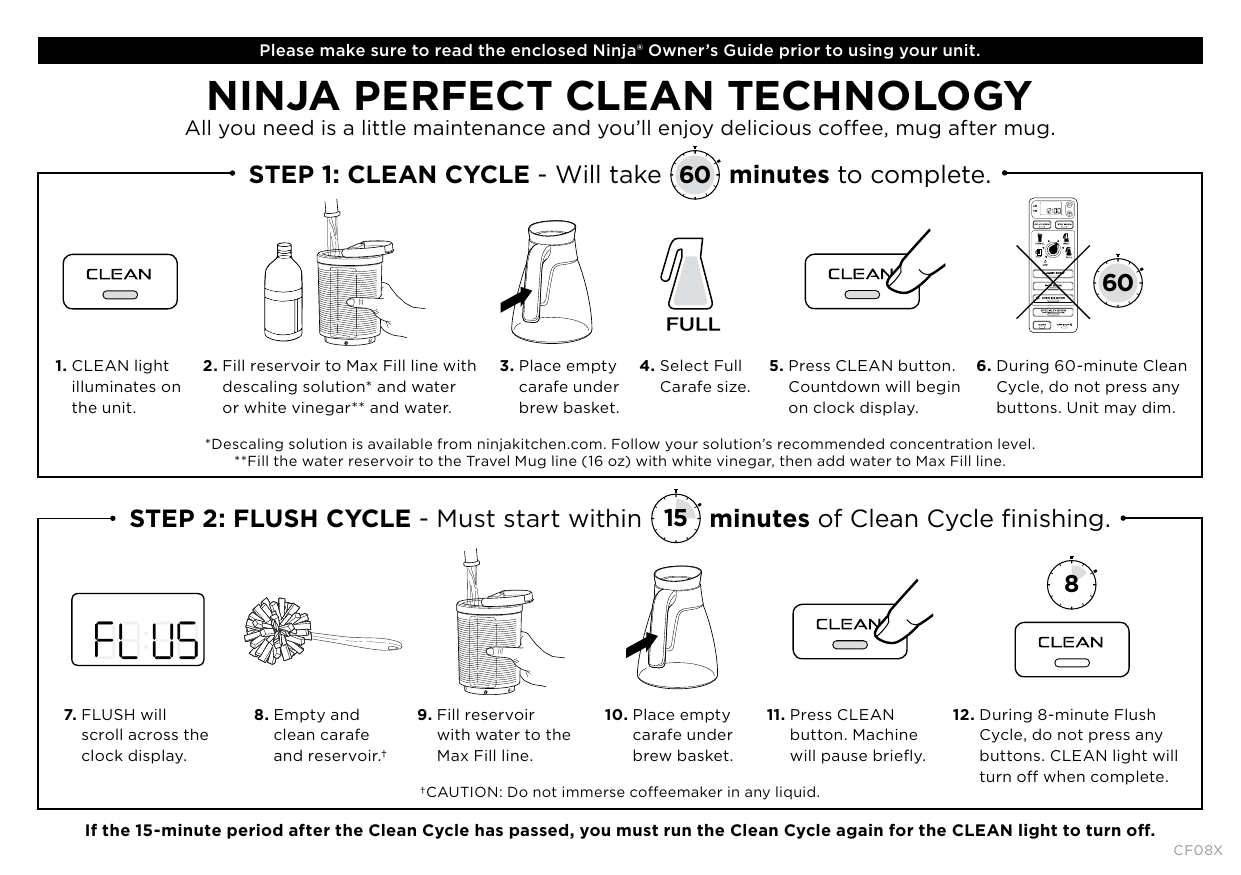
Post-Brew Cleaning Within 60 Seconds
Rinse the portafilter under hot water immediately after use. Scrub the basket with the included brush to remove coffee oils that turn rancid overnight. Wipe the steam wand with a damp cloth and purge for 5 seconds to prevent milk clogs. Neglecting this causes bitter buildup affecting your next shot’s flavor.
Preventing Scale Buildup
Descaling every 2-3 months is non-negotiable. When the “CLEAN” light flashes, run Ninja’s descaling solution through the water cycle. For weekly maintenance, backflush with a blind filter basket and cleaning tablet to clear coffee fines from the group head.
Fixing Bitter, Sour, or Weak Espresso
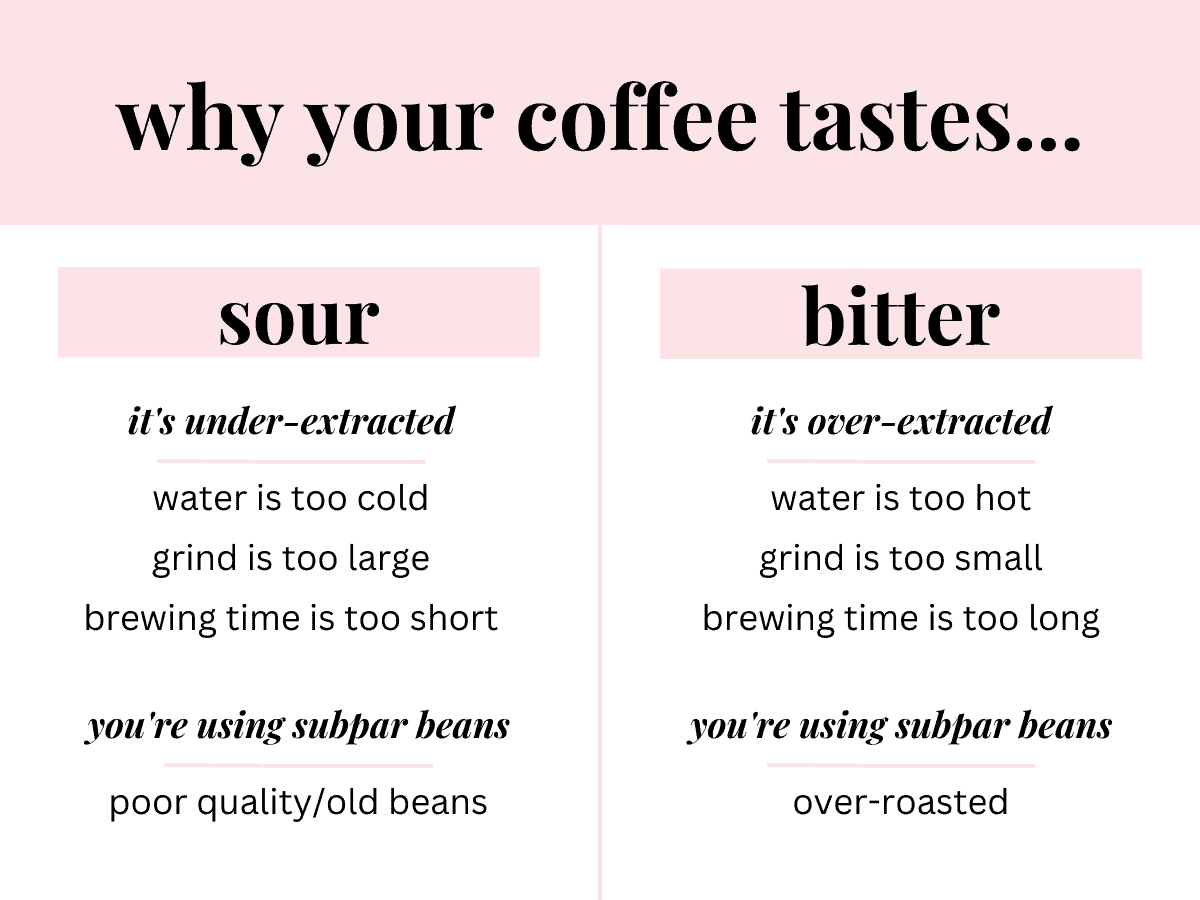
Under-Extraction Solutions
Sour, acidic shots mean water passed through grounds too quickly. Use a finer grind setting or increase dose by 1-2 grams. If your grinder lacks micro-adjustments, tamp slightly harder (but never exceed 35 pounds of force). Always verify 20-30 second extraction time—timing fixes 80% of flavor issues.
Overcoming Low Pressure
If water trickles instead of flowing, check the water reservoir’s click-lock engagement. A half-seated tank causes pressure drops. Also, descale immediately if you notice reduced flow—mineral deposits constrict the thermoblock. For persistent issues, inspect the group head gasket for cracks (replace every 6 months).
Crafting 4 Signature Coffeehouse Drinks
Espresso-to-Milk Ratios That Impress
- Latte: 2 oz double shot + 8 oz steamed milk (1:4 ratio)
- Cappuccino: 1 oz shot + 1 oz steamed milk + 1 oz foam
- Flat White: 1.5 oz ristretto shot + 4 oz microfoam
- Americano: 2 oz shot + 6 oz hot water (press lungo button)
Pour milk steadily from 6 inches above the cup to integrate foam. Tap the pitcher firmly on the counter to pop large bubbles before swirling.
Non-Dairy Milk Pro Tips
Oat milk creates the creamiest foam when chilled below 40°F. Fill pitchers only 1/4 full—plant-based milks expand more than dairy. Steam to 140°F max to prevent separation. For almond milk, use barista-specific blends with added fats for stable foam.
Long-Term Machine Preservation
Monthly Component Checks
Soak filter baskets in espresso machine cleaner monthly to remove rancid oils. Replace the water filter every 60 tank refills (about 2 months) to maintain flow rate. Every 6 months, inspect the portafilter gasket—if it’s hardened or cracked, replace it to stop leaks during brewing.
Energy-saving secret: The auto shut-off after 9 minutes of inactivity saves 30% on power. But if interrupted mid-brew, press any button to instantly reactivate heating—no 20-second reheat wait.
Mastering your Ninja espresso machine starts with precise water, grind, and tamping control. Use filtered water religiously, dial in shots with 20-30 second extractions, and clean the steam wand after every use. Within a week, you’ll pull shots rivaling $5 coffees—with the satisfaction of knowing exactly how it’s made. Store beans in an airtight container away from light, and your machine will deliver perfect espresso for thousands of cups. Now press that power button and claim your first golden crema.

